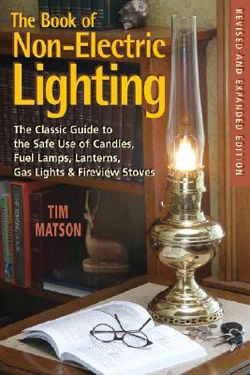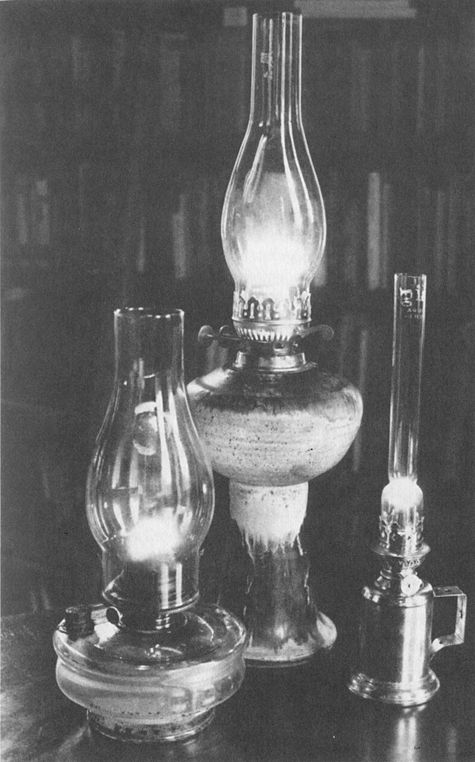The Book of Non-Electric Lighting

Best guide to safe use of flame-based illumination
For off-the-grid living, you have a lot of options for non-electric lighting. (Solar-battery powered LEDs are not covered here.) This booklet goes through the advantages and disadvantages of different types of petrol-burning lamps.
06/22/13Excerpt
Fuel
Kerosene is the standard fuel for wick lamps. The term kerosene is used loosely to describe a thin flammable oil with a rather high ignition or flash point, roughly 160°F. That high ignition temperature makes kerosene safer for household use than more volatile alcohol or gasoline--in fact, a lighted match can be dunked in a pot of kerosene without igniting it.

Kerosene and paraffin fuel lamps are distinguished by their wicks and fuel reservoirs. Pictured here left to right are a single wick with transparent glass reservoir, a duplex wick with ceramic reservoir, and a round wick with brass reservoir.
*
The Chimney
The Aladdin chimney is easy to recognize. At 12.5 inches, it is taller than most lamp chimneys. With only a slight outward curve to accommodate the mantle, it looks more like a glass smokestack than a traditional bell-shaped tapering lamp chimney. This sleek design represents a pinnacle in firelight aerodynamics: the high-velocity draft chimney makes it possible for the Aladdin to burn 94 percent oxygen and 6 percent kerosene, producing 125 candlepower. No other unpressurized liquid fuel lamp delivers such brilliant light.
The Book of Non-Electric Lighting Tim Matson 2008, 104 pages $12






